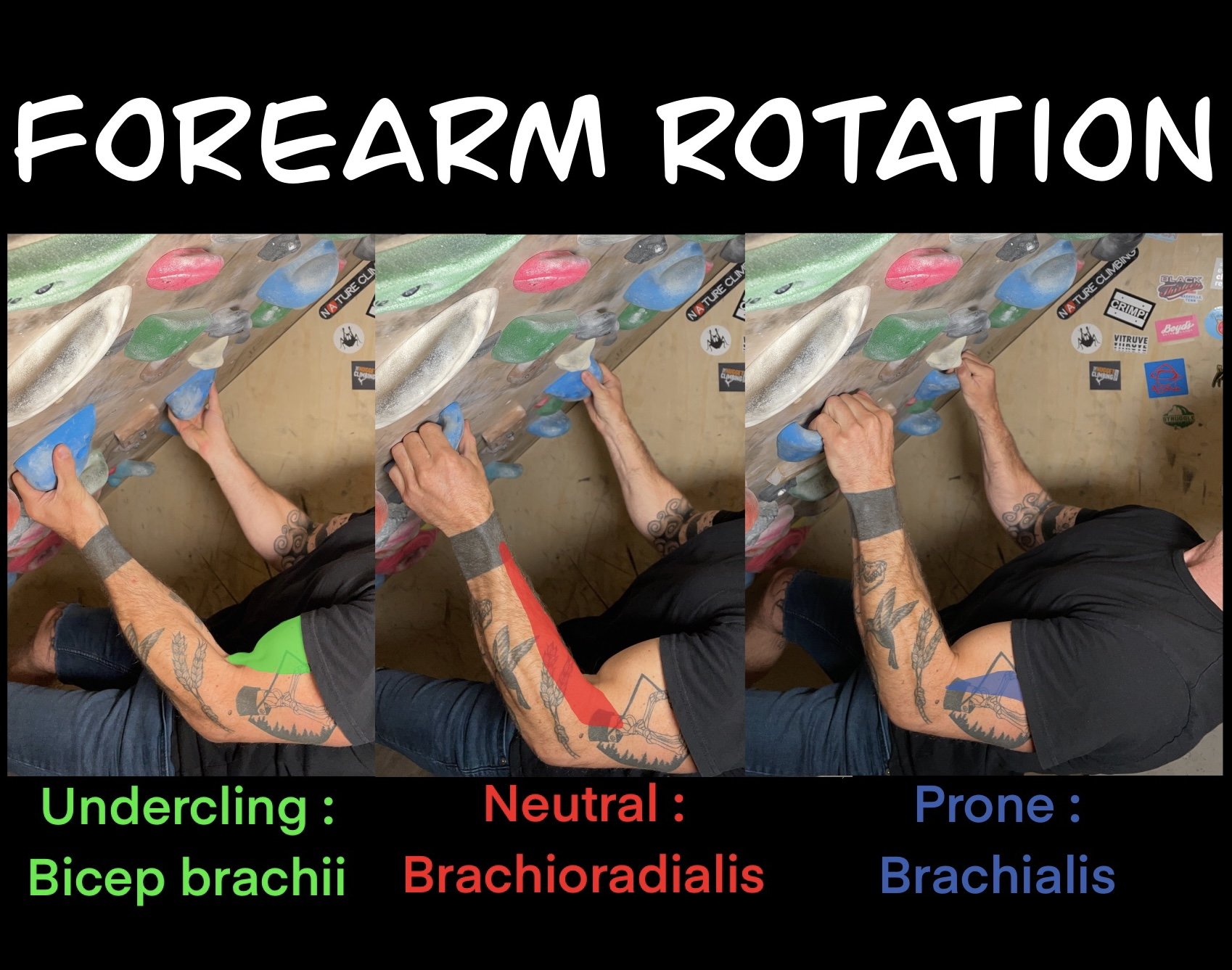Is Your Grip Stressing Your Elbow?
The stress to the elbow flexors varies with forearm rotation, and the forearm rotation varies with grip position.
We need positional variety to stay resilient, but that same variety might not adequately train each.
the prone forearm position
In this most common position, the brachialis muscle is strongest when the palms face away from the face. This muscle lives below the biceps brachii. The pathology "climbers elbow" is essentially a muscle-tendon injury of the brachialis. It presents as pain in the front of the elbow.
the neutral forearm position
The second common forearm position is the neutral position. When grabbing a side pull, compressing, or making diagonal moves, we stress the forearm while the hands face each other. In this position, the brachioradialis muscle is the most active. As a result, many climbers with lateral elbow pain complain of pain above the bone on the outside.
the undercling forearm position
The final position commonly used is the undercling. When the palms face the body, the biceps brachii is the strong elbow flexor. Unfortunately, too many climbers get hurt by not addressing this position enough. From my experience, this is the least trained position. And I am not suggesting you throw in a bunch of bicep curls or supination, either.
here’s what those look like:
Some simple training suggestions:
Replace your heavy pull-ups with heavy chin-ups for a few weeks. Try 5 sets of 3-5 reps at 75-85% intensity.
In your warmup for climbing, do some chin-up isometrics every session. Try 3-4 sets of 5on:3off x 3-5 reps/set at 90-degrees.
Incorporate neutral and chin-up grip isometrics on the wall before your session (like the images shown above). Try 3-4 sets of 7on:3off x 4-5 reps / set at 90-degrees.
Key takeaways:
To build more resilience, we should address all positions, but they don't have to be equal in dosage.
Try and address the positions we use the least.

